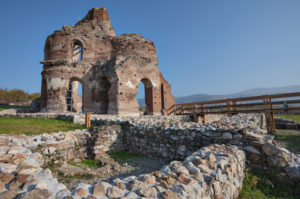
According to the Pew Research Center, there are 584 million charismatic and Pentecostal Christians worldwide. This means that pentecostal and charismatic Christians make up about 27% of all Christians and more than 8% of the world’s population. The majority of Christians who believe that spiritual gifts are for today reside in the Americas and in sub-Saharan Africa. Interestingly, there are regional differences between where charismatic and pentecostal Christians reside. “Almost half (49%) of all charismatic Christians in the world live in the Americas, a region in which 16% of the population is charismatic. Nearly 30% of charismatics live in the Asia-Pacific region.” However, about eight-in-ten of the world’s pentecostals live either in the Americas (37%) or sub-Saharan Africa (44%).
Charismatic and pentecostal believers seek to revive “1st century Christianity,” which they believe included the manifestation of spiritual gifts in worship and praxis (how you live out your faith). The concept of spiritual gifts or charismata is primarily found in the writings of Paul, particularly in 1 Corinthians 12 and Romans 12. With the exception of 1 Peter 4:10-11, charismata is used with this technical sense only in Pauline texts.
Classic Pentecostalism originated in the early twentieth century. The charismatic movement grew out of a growing acceptance of charismatic teachings and ideas within mainline denominations in the 1960s, namely that the spiritual gifts are available to contemporary Christians through the infilling or baptism of the Holy Spirit.
There is evidence from a variety of sources in the early church to the presence of charisms or spiritual gifts with its worship and praxis. According to Kilian McDonnell and George Montague in Christian Initiation and Baptism in the Holy Spirit, by the end of the fourth century John Chrysostom (c. 347–407) nostalgically referred to the charisms as “long gone”; a part of the life of the church during apostolic times “but now no longer.” Despite this pronouncement, there were references to their presence through the beginning of the eighth century. Ronald Kydd concluded from his survey of the early church that, generally speaking, the church was charismatic prior to A.D. 200. However, in the first half of the third century, things began to change; the importance granted to the charisms weakened.
In Charismatic Gifts in the Early Church, Kydd said he formed this impression from observing that a lower proportion of Christian authors made specific reference to the charisms after A.D. 200. He did not have a theory for this, but McDonnell and Montague did. They suggested the controversy over Montanism resulted in a theological position within the church that undercut the validity of both the so-called ‘new prophecy’ movement of Montanism and the continuation of the charisms within the life of the church. Jaroslav Pelikan agreed with this assessment and identified the work of Hippolytus (c. 170-236) as a key factor in this adjustment. Montanism was a negative example of early “charismatic” practice, and a key factor in the passing of the charisms from the life of the church.
The earliest evidence for the charisms in the life of the church comes from the letter of Ignatius to the Philadelphians, and three documents whose authorship is either anonymous or in question: the Didache, 1 Clement, and The Shepherd of Hermas (all are found in The Apostolic Fathers). Ignatius (35-108 AD) is an important source, as he personally claimed the gift of prophetic utterance in his exhortation to the Philadelphians to obey their appointed leaders: “I called out when I was with you, I was speaking in a loud voice: ‘Pay attention to the bishop and to the presbytery and deacons.’” Noting that there were some who questioned the credibility of his prophetic word, he again affirmed that: “the Spirit itself was preaching.”
The Didache was most likely edited into its present form towards the end of the first century from materials written around 70 A.D. It is composed of two parts: the “Two Ways” (I.I–6.2) and a manual of church order and practice (6.3–16.8). The Two Ways is a summary of basic instruction about the Christian life that was to be taught to those preparing for baptism and church membership. The way of life was essentially the two great commandments to love God and your neighbor, as well as the negatively stated golden rule: “whatever you do not wish to happen to you, do not do to another.” The Lord’s commandments were to be followed; neither adding nor subtracting anything.
Abortion was one of the activities the Didache condemned as sin. The way of death was “evil and completely cursed”, encompassing murder, adultery, lust, fornication, theft, idolatry, magic arts, sorcery, robbery, false testimony, etc. The church order and practice section assumed the existence of traveling apostles and prophets alongside a resident ministry. While a specific form of prayer was recommended to be said after the Eucharist, believers were to “permit the prophets to give thanks however they wish.”
Some scholars have speculated from this reference that the prophets may have had a liturgical role in the Eucharist service. The local church was to appoint men as deacons and bishops who were true and approved; humble, but not greedy. They were to be honored as the prophets and teachers were, for they carried out the ministry of the prophets and teachers within the local church.
The writer of 1 Clement claimed that his exhortation to the Corinthian church was “written through the Holy Spirit.” The writer of the Shepherd of Hermas described how tell a real prophet from a false prophet: “Determine the man who has the divine Spirit by his life.” He will be gentle, quiet and humble. He will avoid all evil and futile desires of this age and consider himself to be poorer than others. He does not speak on his own, but when God wants him to speak. Both 1 Clement and The Shepherd of Hermas were highly regarded by the early church. Some church fathers even considered them to be canonical writings.
Witnesses from the second century include: Justin Martyr, Irenaeus, Tertullian, and Origen. In his apologetically inclined Dialogue with Trypho, Justin Martyr (100-165 AD) boasted to the Jewish Trypho “that the prophetic gifts remain with us,” having been transferred from the Jews. Referencing the work of Irenaeus (130-202 AD) in The History of the Church, Eusebius commented that “He makes it clear that right down to his own time manifestations of divine and miraculous power had continued in some churches.” The dead were raised; demons were cast out of some—who often then believed and became members of the Church. There were some who had knowledge of the future, visions and prophetic utterances. The sick were healed and restored to health by the laying on of hands.
Eusebius quoted Irenaeus as saying: “Similarly, we hear of many members of the Church who have prophetic gifts and by the Spirit speak with all kinds of tongues, and bring men’s secret thoughts to light for their own good, and expound the mysteries of God.” In Against Heresies, Irenaeus commented that they were truly unfortunate, “who, realizing there are false prophets, take this as a pretext for expelling the grace of prophecy from the church.”
Tertullian (160-220 AD) and Origen (184-253 AD) were said by later theologians to have questionable doctrines. Regardless of the final assessment of their theology, they remain significant witnesses to the presence of the charismatic gifts in the life of the church. With Tertullian, we directly encounter the impact of Montanism upon the church itself, for Tertullian himself became a Montanist. However, before his renunciation of orthodox Christianity, he wrote of the association of the charisms with the rite of baptismal initiation.
Tertullian said as the neophyte came up from the water, they were to raise their hands and pray insistently for the bounty of the charisms to be given to them. Charisms were evidently facts of everyday church life; they were expected to be given—to those who asked—within the rite of baptism. Along with Tertullian, Origen associated baptism with the charisms listed in 1 Corinthians 12. This seemed to have been the common teaching in the early third century church. Although the presence of the charisms was not what it was during apostolic times, Origen said that traces still continued in the church. Although by the Council of Constantinople in 543 there had been two separate condemnations of the “speculations” of Origen, his teaching that baptism was the principle and source of the charisms was never condemned.
In Part 2 of “Spiritual Gifts in the Early Church,” we will look at the unique influence of Montanism on the life of spiritual gifts in the early church.





